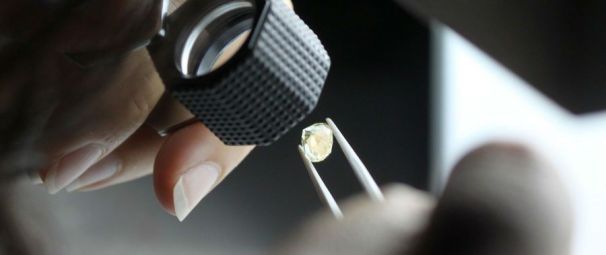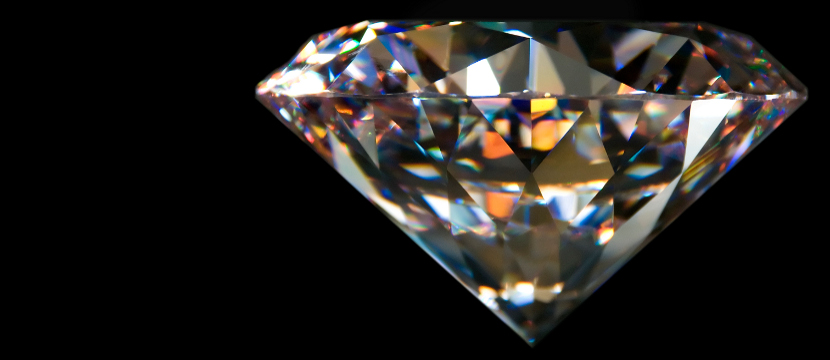While you cherish your diamonds, regardless of whether you were gifted them or they were passed down to you from various family members, a small part of you may be wondering how much the diamonds are actually worth and what the resale value of them are. Even if you bought the jewelry yourself, and know exactly how much you paid for it, the real value is not in the price tag.
To know how much your diamonds are truly worth, you need to get them evaluated by a trained gemologist, who can give you an accurate appraisal or grading report (although they sound interchangeable, these are two separate things, which we’ll get to in a moment.)
How does an Appraisal determine my diamond’s value, and why do I need one?
A diamond appraisal, in a nutshell, assigns a dollar value to your jewelry. However, the price at which your diamond is appraised at is not its absolute or true value. The reason for this is because the appraisal value will factor in things like inflation rate. An appraisal is, in essence, a way to give you an idea of how much you can insure the diamond for, or for tax purposes.
It is important to remember that the valuation is not the price you paid for the diamond or the rate at which you can sell it, but it can serve as a general guideline as to how much you can expect.

What is a grading report then?
In simple terms, a grading report is a thorough examination of the actual diamond’s characteristics, which are termed the 4Cs – Carat, Cut, Colour, and Clarity.
Carat— The Carat refers to the weight of your diamond. For reference, 1 carat equals .2 grams. Heavier diamonds are rarer, and therefore more valuable than smaller diamonds.
Color— Most diamonds appear colorless to the untrained eye, but in actuality, diamonds often have a slightly yellowish or brown tint. The color grade is determined by ratings from D to Z. D is the best, meaning there is no color tint, and Z is for when the diamond displays an intense yellow hue.
Cut — People generally think of a stone’s cut as its shape (such as round, emerald or pear), but in the diamond grading process, “cut” more appropriately describes how well a diamond’s facets show off light. The seven components of the GIA Cut Grading System are brightness, fire, scintillation, weight ratio, durability, polish, and symmetry.
Clarity— This addresses the quality of the diamond, assessing both its internal and external flaws and must be done with special tools. Rare diamonds are those that do not have any imperfections such as clouds, inclusions or scratches, and will, of course, be the most valuable.
Diamond grading reports are completed by professional gemological labs, such as GIA (Gemological Institute of America), EGL (European Gemological Laboratory), IGI (International Gemological Institute) and AGS (American Gem Society).
A final point to keep in mind: if you want to sell diamond jewelry, an appraisal will tell you the value of the jewelry as a whole, while a grading report will cover the characteristics of the diamond alone.
Where can I get my jewelry appraised?
Most jewelry retailers, like Hofland Diamonds Inc, have qualified gemologists on staff who can carry out the appraisal for you. The important thing to remember, once again, is that appraisals assign a dollar-value to a diamond, and they are carried out for specific purposes, like insurance or tax, and the value stated in the assessment is only valid in that context. Therefore, it would be a good idea to let the appraiser know precisely why you need the valuation so that they can be sure to consider the right factors.

How do I know if the Appraiser is qualified?
It goes without saying that the appraiser should be qualified to make a judgment on the value of a diamond.
Look for certifications proving that the person has been trained in gemology. One such qualification is Graduate Gemologist, denoted by the initials “G.G.” after the appraiser’s name (the British equivalent is “F.G.A.”).
Although knowledge of gemology is necessary, it is not enough as such training is focused on examining a stone’s physical characteristics, not on assigning a value to them.
To make sure that an appraiser is qualified to assess how much a diamond is worth, make sure he or she is also trained in valuation.
Look for qualifications showing that the professional has been certified by a reputable appraisal organization such as the National Association of Jewelry Appraisers (N.A.J.A.), American Society of Appraisers (A.S.A.), American Gem Society (A.G.S.), or International Society of Appraisers (I.S.A.).
How much does a Diamond Appraisal cost?
The cost will vary greatly, depending on the complexity of the jewelry that the diamond is part of. Some appraisers may also charge a fee based on a percentage of the appraisal, but it is best to avoid these since they are more likely to inflate the appraisal valuation.



